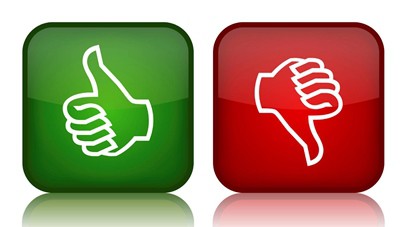
The world’s biggest organizations now rank reputational risk as one of their top concerns, with the fear that one negative publicity event, product recall, misconduct, or business interruption could erase years, even decades of goodwill and trust.
“It’s moved up the risk registers of most big companies,” Martin Emkes, managing director of Arthur J. Gallagher International’s property-casualty division. The insurance industry has responded to corporate concerns by tailoring products that address reputational risk and its effects. These can include the costs of media assistance and public relations firms, or business interruption due to lost revenue or sales.
However, reputational risk means something different to every organization. It can also be challenging to effectively measure reputation, as well as a definitive hit to it.
“It’s a grey and woolly commodity. It’s hard to pin down,” noted Emkes, who specializes in the reputational risk field. He explained that risk managers may face budgetary challenges in terms of insuring for reputational risk, or they might not know what type of insurance they need.
“It’s rare that these are off-the-shelf products,” he said. Insures and brokers will work with clients on finding and developing the right coverage, as well as the right steps toward risk management.
A KPMG survey conducted earlier this year revealed reputational risk drives transparency efforts for many corporations, both to satisfy consumers and regulators.
A Deloitte survey from last fall found reputational risk to be the number-one concern for C-suite executives, with companies finding that a 24-hour news cycle leaves no time for mishandling a message.
And the issue has only grown in importance in the intervening year, as adverse events such as data breaches have plagued corporations.
The first step in protecting any reputation is to define what reputation means to the company, according to Tracy Knippenberg Gillis, leader of Marsh Risk Consulting’s reputational risk and crisis management practice, who spoke during a “New Reality of Risk” webcast held by Marsh this week.
Simply put, reputation means “the opinions and expectations that others hold for your organization,” she explained. It is “the sum of all you do to build your brand in the marketplace.”
During any adverse event, an organization’s reputation is most at risk – it can affect financial performance, employee morale and even the business’ standing in the industry or broader community, Gillis added.
A participant survey conducted during the webcast revealed nearly half (46.8 percent) of the audience do not feel their organizations know how to properly quantify reputational risk.
Thirty-five percent didn’t know if their organizations have a handle on the risk. Gillis said the response isn’t surprising, with reputation being “somewhat intangible, by its nature.”
Richard Smith-Bingham, director of Oliver Wyman Global Risk Center, commented that it’s useful to think of reputational risk as “a breakdown in trust” that should be analyzed for its effect on all stakeholders.
Smith-Bingham said the key thing is to understand the “magnitude of the risk,” where it began and where in an organization it could “spill over.” He cited a Wharton Business School review of sudden stock price drops for Standard & Poor’s 500 companies. Many of the price drops stemmed from hits to the public image of the companies – and the study showed that the average time for a return to pre-drop levels was 80 weeks.
However, by having plans for crisis management and business continuity and keeping them updated, organizations can reduce the severity and length of the effect of any risk, according to Gillis.
“World-class companies that have these programs maintain them,” she said. “This is not just a check the box situation. It requires care and feeding and maintenance.”
Gillis noted that all risks managed by an organization could give rise to a reputational risk, and reputational risks themselves can amplify other risks.
Nir Kossovsky, CEO of Steel City Re, commented during the webcast that he sees reputation as “something integral to the contract between stakeholders and the company” and there are ways to measure its worth to a company.
“Clearly, our understanding of reputation value has been maturing over the last decade,” he explained. Better reputations, brand legacy can lead to better stakeholder behavior, including fewer short sales of stock, better pricing, better conditions for employees and more opportunities for capital from investors.
A good reputation can convey that a company or brand is the “best, most admirable, most socially conscious,” he said.
“These are all measurable, all transparent,” said Kossovsky. “The impact of these various reputation phenomena on those line items can be extracted and measured.”
The panel agreed that the best preparedness programs are embedded into the management framework of an organization and involve buy-in from the outset from the C-suite. Without this advance planning, a corporate mishap could quickly spin out of control.
Gillis added that organizations need to consider the costs of mitigating reputational risk in the light of actual costs of the impact of the risk on the reputation and its ripple effects. The higher the cost, the time, money, and effort a company may spend on preparation, providing “a consistent, stable and repeatable approach.”